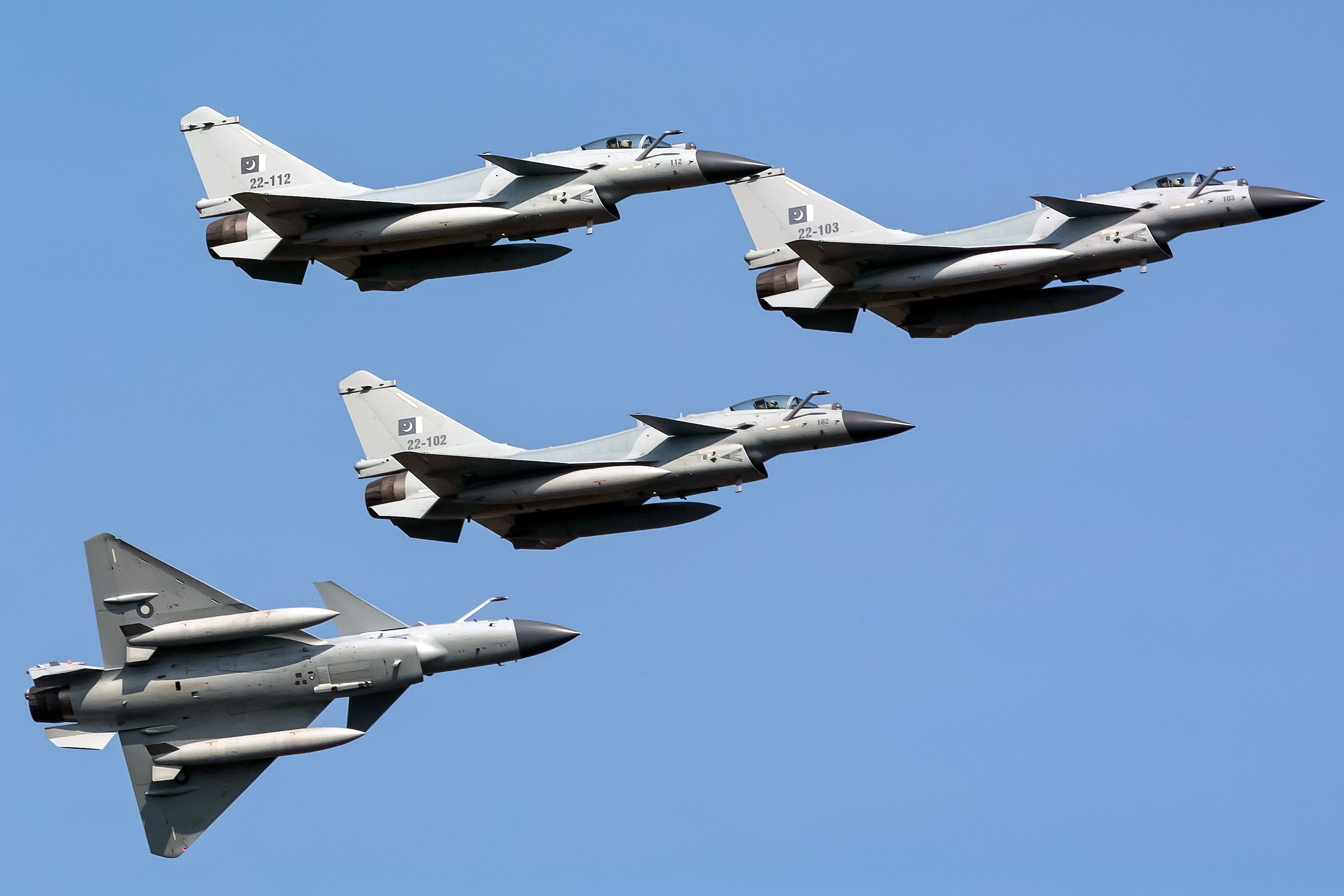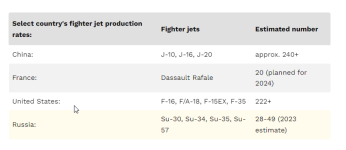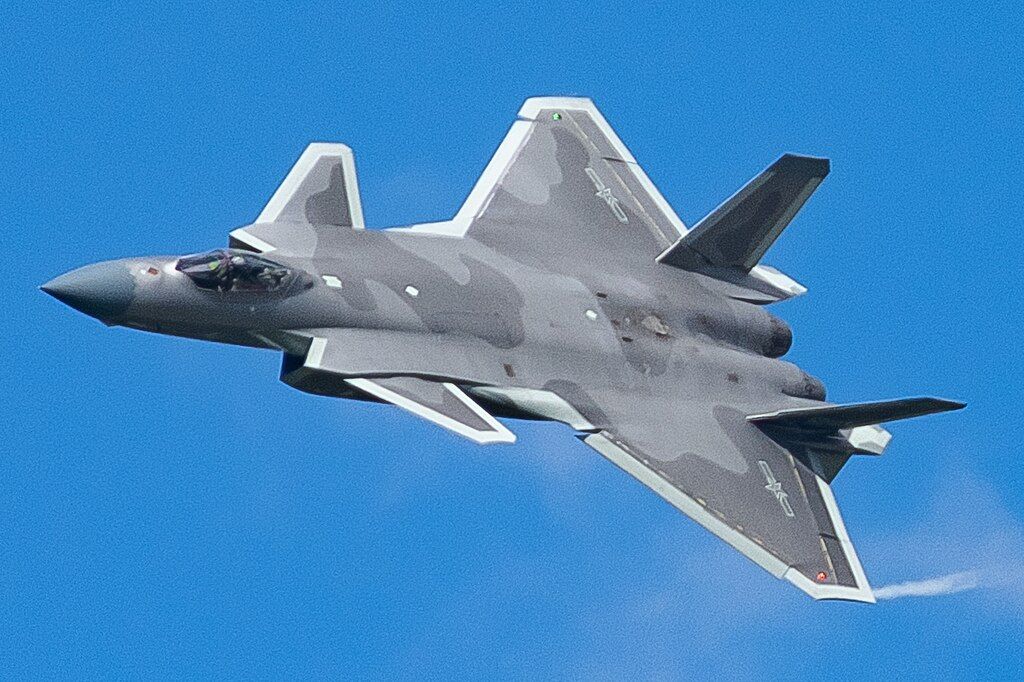Beijingwalker
Elite Member
- Nov 4, 2011
- 76,577
- 104,150
- Country of Origin

- Country of Residence

How Many Fighter Jets Does China Produce Annually? Concerns arise about China surpassing the US Air Force in fighter jet production

By Aaron Spray
Published 15 hours ago
SUMMARY
- China produces around 240 J-10, J-16, and J-20 fighter jets annually, plus J-11s and J-15.
- Recent advancements show an increase in Chinese jet production, with a focus on new engines.
- Concerns arise about China surpassing the US Air Force in fighter jet production.
A laggard no more
For many years, the Chinese fighter jet industry was somewhat a laggard. Chinese Cold War fighter jets were mostly Soviet jets produced under license. China continued to produce the ancient Chengdu J-7 (a copy of the Soviet MiG-21 Fishbed) as late as 2013 (although for export).
Photo: rehan waheed | Shutterstock
Today, many of China's fighter jets are old Soviet jets or licensed copies. Much of the Chinese Air Force's inventory is based on the Soviet/Russian Su-27 Flanker. Other legacy aircraft in Chinese inventory are Soviet copies. For example, the Shenyang J-11 and J-16 are licensed copies of the Su-27 Flanker. China also purchased Russian Su-27 Flankers, Su-35s, and Su-30s (both modern variants of the Su-27) in large numbers.

But this is now changing dramatically. In recent years, China has developed the J-10 Dragon and the fifth-generation J-20 Mighty Dragon. Importantly, throughout the Cold War and into the 2000s, China could not develop and produce its own advanced fighter jet engines. But this appears to be changing.

Photo: N509FZ | Wikimedia Commons
China is finally developing and fielding its own jet engines as it continues to break away from dependence on Russia in the sector. It can now produce the WS-10 and WS-15 series engines as credible and reliable engines for its J-10C and J-20 aircraft.
Chinese Fighter jet production estimates
According to reporting by Air and Space Forces Magazine, China produces roughly more than 100 J-20 Mighty Dragons (NATO reporting name Fagin) a year (these are China's vaunted 5th-generation fighter jets). Rick Joe, writing for the Diplomat, offers considerable analysis on the new WS-10 and WS-15 engine series.Joe also delves into the J-20 production numbers. He stated previous expectations for J-20 production in 2023 "may approach 100 aircraft a year by the end of 2023 and comfortably meet 100 per year in 2024." However, writing in August 2023 and using retrospective estimates, he suggested 70 J-20s were delivered in 2022, and it is unknown if this rate would be expanded further and if 70 or 100 would be produced in 2023. However, he did note the apparent expansion at the factory and that 100 per year was credible.

For comparison, the US is producing around 135 F-35s a year (expected to be stable at around 156 airframes annually). However, around 60 to 70 of those F-35s are for export to allies and partners. Additionally, while the F-35 and J-20 are typically labeled fifth-generation fighters, they are not the same, and the F-35 is considered significantly more capable.
China also produces around 40 Chengdu J-10C Vigorous Dragons (NATO reporting name Firebird) annually. The J-10 is sometimes compared to a low-end F-15EX. Topping off the Chinese fighter jet production list are more than 100 Shenyang J-16 Hidden Dragons (NATO reporting name Flanker-N). It should also be noted that these are current production numbers, and China may ramp up production.
It should also be noted that China is developing the multirole Shenyang FC-31 fifth-generation fighter. China also produces Shenyang J-15 and Shenyang J-11s based on the Soviet Su-27 Flanker (these are used in the navy). It is unclear how many of these are being produced.
Fears of overtaking the US Air Force
Chinese fighter jet production is now impressive, which has led to fears that it will overtake the US Air Force to become the largest in the world. Navy Admiral John C. Aquilino stated before the Senate Armed Services Committee in March 2024, "The world's largest Navy (China by number of hulls), soon to be the world's largest Air Force. The magnitude, scope, and scale of this security challenge cannot be understated; all would be challenged."That said, China has a way to go to replace its many dated aircraft, and the US will have far more combat aircraft if the Navy and Marines are added to the tally.
The combined Chinese Air Force and Navy are believed to have around 3,150 aircraft (excluding trainers and drones). By comparison, the US Air Force has around 4,000 aircraft, excluding trainers and drones. The Navy and Marines have a combined inventory of around 3,300 jets, raising the figure to over 8,000 jets for the US.





